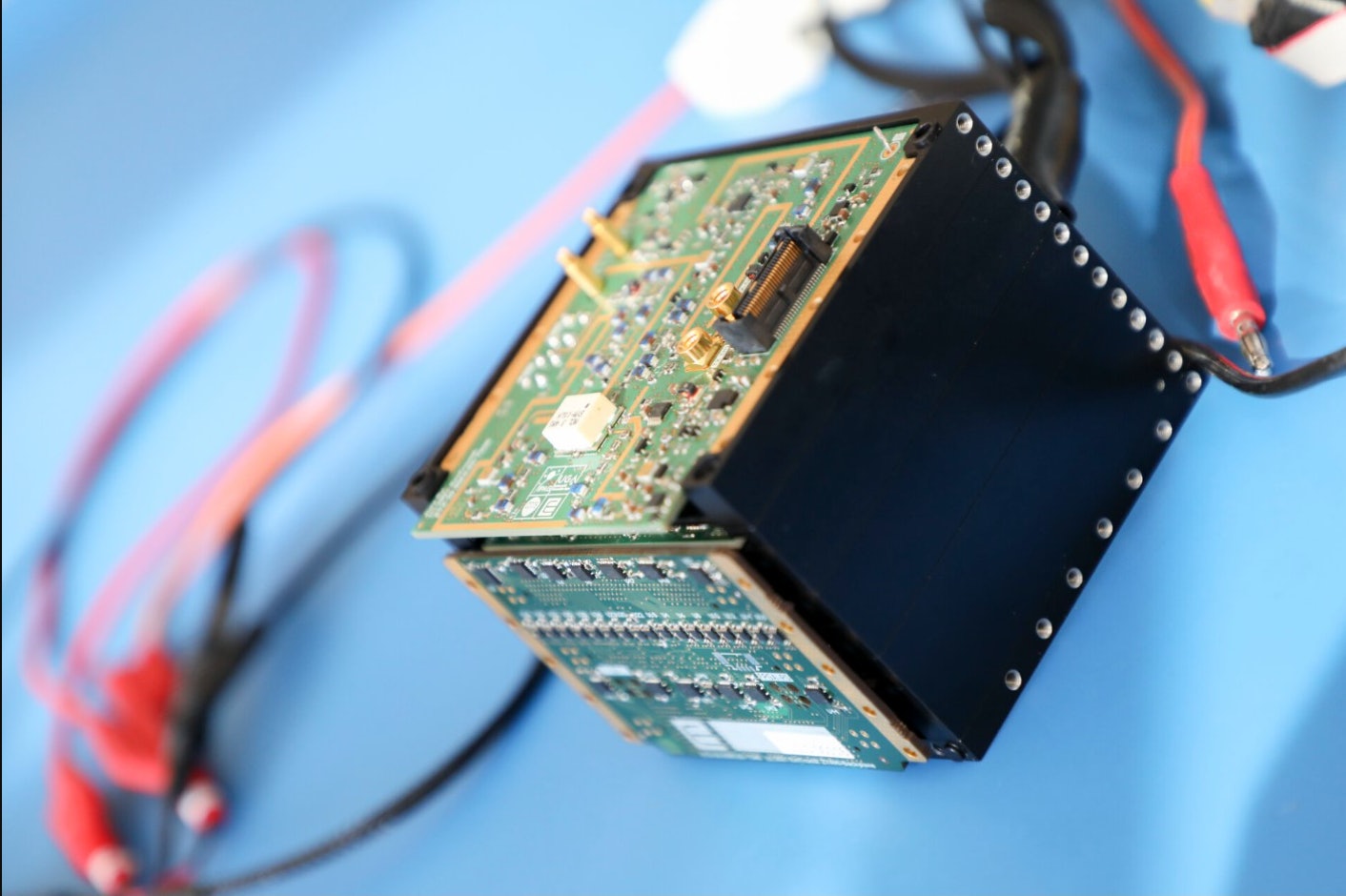
Are miniature probes the future of deep space exploration? It’s starting to seem that way. While school bus-sized flagship missions still zoom around our solar system from Mars to Jupiter, they are more and more frequently accompanied by tiny tag-along CubeSats with specialized capabilities.
That trend is set to continue in 2024 when the European Space Agency (ESA)’s Juventas CubeSat blasts off on its way to asteroid Dimorphos, the site of September’s dramatic impact event where NASA’s DART mission purposely crashed a spacecraft at high speeds to test the viability of asteroid redirection by humans. The Juventas CubeSat is equipped with a radar instrument — the smallest ever sent to space — to probe beneath the asteroid’s surface and understand its structure in the aftermath of the impact.
Juventas is one of three ESA probes that will fly to Dimorphos together. A second CubeSat, Milani, is designed to study the composition of the asteroid’s surface and dust. Meanwhile, a larger probe, named Hera, will complete the trio with a more comprehensive suite of instruments. Together, they will offer a complete survey of Dimorphos — its internal and surface features, its mass, and, importantly, the size and characteristics of the crater left by NASA’s DART mission.
Exciting results

The trio of ESA spacecraft isn’t expected to reach Dimorphos until 2026, but Earth-based and telescopic observations of the asteroid already suggest that the DART mission performed well beyond expectations. Dimorphos is a “moon” orbiting a larger asteroid named Didymos, and before the impact, each orbit took 11 hours and 55 minutes. NASA scientists hoped to demonstrate a change in the orbital period of at least 73 seconds to consider the mission a success. That mark was wildly surpassed, shortening Dimorphos’ orbit by an astounding 32 minutes.
When it comes to planetary defense, even a small change to an asteroid’s trajectory can prevent a catastrophic impact, as long as it is done early enough, so the DART mission’s results are exciting. While Dimorphos is only a very small asteroid (170 meters across), and larger objects will be harder to deflect, DART’s ability to significantly change Dimorphos’ orbit offers a reassuring proof of concept. Should the Universe happen to send a dangerous object hurtling our way, Earth will be ready, provided we see it coming in time.
It may be comforting to know that most large asteroids in the solar system are tracked by space agencies around the world, so the chance of a surprise asteroid impact is low. In fact, the more likely threat may come not from asteroids but from comets, which spend most of their time out in the Kuiper Belt beyond Neptune, making them nearly impossible to track and predict.
Luckily, we know quite a lot about cometary structures through missions such as the Rosetta probe that visited comet 67P/Churyumov-Gerasimenko back in 2014.
The Juventas CubeSat’s tiny radar instrument being sent to Dimorphos will be a miniaturized version of the one Rosetta carried to comet 67P.
When Juventas, Milani, and Hera arrive at Dimorphos in 2026, they will get up close and personal with it, offering detailed information about the asteroid’s composition. Asteroids that are solid may deflect differently than asteroids made up of small gravel and boulders, so learning as much as possible about the object’s composition can only improve our understanding of the physics involved in redirect missions, should one ever become necessary. And CubeSats like Juventas are capable tools for this kind of investigative mission.
Mini instruments’ time to shine

Going forward, CubeSats and miniaturized instruments are likely to become more ubiquitous on deep space missions. While these compact space probes are less well-rounded than their larger counterparts, they offer specialized capabilities at a relatively low cost, making them an ideal supplement to larger missions. Since the first deep space CubeSats flew in 2018 (the twin MarCO spacecraft that accompanied InSight on its way to Mars), dozens more mini probes have been planned and built.
Some have already proven their worth. JAXA’s Hayabusa 2 mission to asteroid Ryugu, for example, landed three tiny rovers (the twin Minerva-II rovers and the German-built MASCOT rover) on the asteroid’s surface in late 2018, and a deployable camera was released from the spacecraft to observe an impact event (when Hayabusa 2 “shot” the asteroid to expose the subsurface for sampling).
The upcoming Europa Clipper is expected to carry CubeSats too, as is the imminent Artemis 1 mission to the Moon. The CAPSTONE CubeSat is already in Lunar orbit right now, testing capabilities that will be required for Artemis’ Gateway space station. Across the solar system, CubeSats are making waves. They say big things come in small packages, and when it comes to space exploration, that may yet prove to be truer than we imagined.
This article was originally published on Universe Today by Scott Alan Johnston. Read the original article here.







